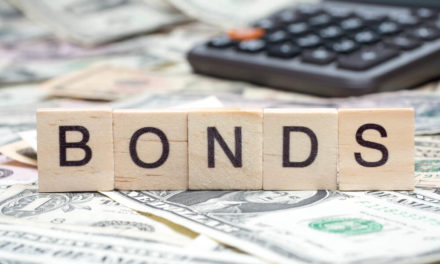Despite stocks ticking upward, we are still sitting in a down market, but there are still a number of ways you can make money while waiting for a market recovery.
The stock market is just like gravity: What goes up must come down, and vice-versa.
Right now, we are in the midst of a sluggish, volatile market recovery that has no idea when it will bounce back up again for the long term.
The Federal Reserve has pumped more money into the economy in hopes of stabilizing it. However, recent stock market misfortunes aren’t due to a lack of money, but rather a lack of people spending the money they have.
And even though some life has been injected, helping the market recovery via massive stimulus, data and analysts suggest this downward trend isn’t over.
Couple that with a recession-trending economy, and a majority of investors are left to guess what their next moves should be. If you want profits — and who doesn’t? — you will search high and low to find them.
But, despite all of that, there are simple factors you can use to continue making money while waiting for a market recovery.
Making Money While Waiting For a Market Recovery
1. Tech Can Be the Answer
My friend Ted Bauman with Banyan Hill Publishing taught me one thing about looking for emerging companies: find the moat.
It sounds strange but what this means is simple: You want to find companies that provide the services or products that other companies can’t do without. They, essentially, build a moat around their profits, no matter what the rest of the market is doing.
“These are companies that you don’t hear much about,” Bauman, a noted economist and Editor of The Bauman Letter, said. “But they’re so integral that — in the case of one group, for instance — without their products, we not only won’t have 5G wireless … we wouldn’t even have the internet.”
As Bauman alluded to, a lot of these companies can be found in the technology sector. Semiconductor companies that build the microchips that are essential to your smartphone running on a 5G network.
Think cell tower owners that lease the space required for larger companies to establish that 5G network, and you get the idea of how to make money amid a market recovery.
2. Balance Is the Key
When I talk about balance, I mean something very simple: Look for companies that have strong balance sheets.
It’s easy to look at technical data to try and pinpoint what company is a good buy, or which ones are less volatile, but you have to dig a little deeper.
Keep an eye on the financial data of a company you are potentially looking to invest in. You want to look for companies that provide strong balance sheets, despite what the economy looks like.
“That means low debt and plenty of assets with alternative uses that maintain their value no matter what,” Bauman said.
3. Safe Dividends
By now, regular readers probably know I am bullish on companies that provide dividends.
But it goes beyond that.
Remember, not all company’s dividends are the same.
Of course, it’s great when a company comes out with an enormous dividend in a quarter, but the real question is can they maintain it?
If they can’t, you’re looking at a one-off payment and the potential for long-term losses.
“There are plenty of companies out there paying double-digit dividends who won’t be around in a couple of years,” Bauman said.
There are also companies out there that will eat into their profit margins for no other reason than to preserve a dividend payment. That’s not good either.
The key is to take a hard look at the company’s performance and balance sheet. Then, you have to ask yourself if their dividends during a quarter were justified, or did they take unnecessary financial risks to offer it?
If it’s the latter, best to stay away.
4. Remember This Overlooked Indicator
There’s something else to look at when examining companies that pay dividends, and that is their yield on cost.
Quite simply, that is the dividend you get as a percentage of your original purchase price. Remember, what you see on a financial website is the dividend percentage today. It changes when the company’s share price does.
If you purchased a company at $10 per share and it paid a dividend of $0.50 per share, you would be looking at a 5% yield.
Let’s say that company is strong and the share price grows. So does its dividend.
Over time, when that company explodes to $100 per share, you have made a tidy sum just on stock price appreciation.
Where yield on cost comes in is when that company increases its dividend to, say $5 per share. You paid $10 per share, so with a $5-per-share dividend, you have a 50% yield.
So, look at the forward dividend yield of a company to help determine the potential for a strong yield on cost.
One way to capitalize on these factors is to look at dividend-paying exchange-traded funds. There are various income and high-dividend-yield ETFs that are worth a look.
I’ll show you some of those in an upcoming article.
The bottom line, as always, is to do your homework when you are looking to make money. Companies are not the same. They all provide different products and services, as well as different dividends.
Using these factors can certainly help you make money as you wait for a market recovery.





